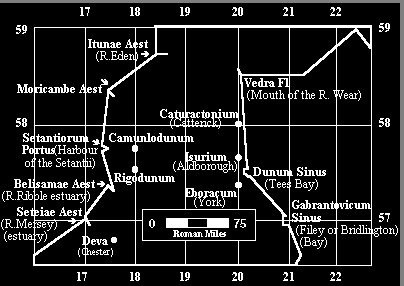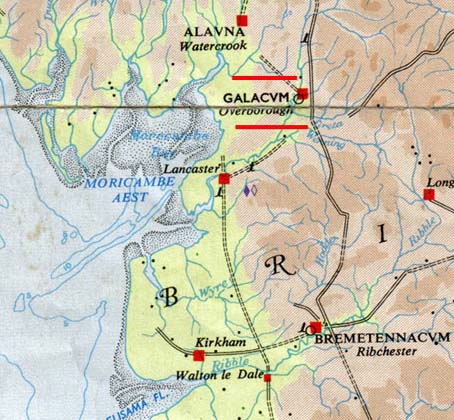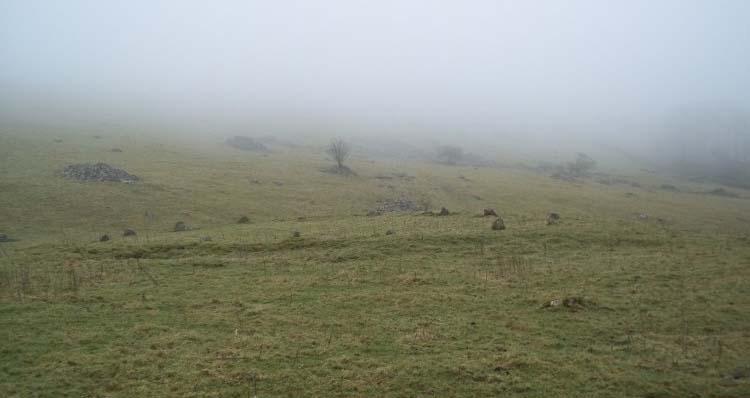It looks like you're using an Ad Blocker.
Please white-list or disable AboveTopSecret.com in your ad-blocking tool.
Thank you.
Some features of ATS will be disabled while you continue to use an ad-blocker.
16
share:
The consideration of where an actual Camelot was located in connection to the Arthurian tradition is always going to be bound up with those who wrote
the traditions at the later date and what interests they had in suggesting it's importance, what place was it understood to have had in the mythos
then equally important to any Geographic suggestion.
One of the main contenders as the basis for Camelot as having been important is Camulodunum named after the war God Camus, modern day Colchester, which had been the capital of the Roman province of Brittania, the main problem with that though is by tradition the battles Arthur fought were in establishing a Kingdom in Northern England so accordingly i want to consider the Camulodunum of the North.
Ptolemy then places this Camulodunum in the tribal region of the Setantii fairly close to the Portus Setantiorum, these were a sept or sub-tribe of the Brigantes, who ruled the entire north of England, this tribal settlement never appears to become Roman which has made actual identification of the place suggested difficult, but it is mentioned again in a more localized context;
In suggesting that Camuloduno lay between the Roman Forts at Lancaster and Watercrook the only possibility is connection with the Roman Fort at Galacum and the nearby Roman settlement of modern day Casterton, the stone Fort which could hold a 1,000 man garrison and remained in use throughout the Roman occupation was in association with the Setantii settlement of Camuloduno and one finds traces of iron occupation such as at Leck Fell adjacent to Casterton Fell;

And even on Casterton Fell itself there is the stone circle, the area above the Lune valley an important site of the Setantii inhabitants.
The question then is what importance would the settlement at Camulodunum have had in the struggles of Post-Roman Britain, or more likely the nearby Roman Fort of Galacum, and the first thing that should be noted is that nobody had any interest in a united Britain, that was impossible, and the breakdown appears to have been according to the old tribal confederations, thus the concern here was in re-establishing the tribal region of the Brigantes;
Initially the Kingdom of Rheged then covered most of Northern England, but then was split with only the Western half retaining the name, Camulodunum was central within this Kingdom, with Carlisle as it's Northern capital under Carvetii control and Ribchester in the South under the Setantii
In none of this had there been an actual King Arthur, that tradition relates to the Sarmatian Knights and the veteran settlement at Ribchester which had been granted the right to settle in that region as was outline in From Scythia to Camelot, they would have been important in establishing the Northern Kingdom and first mention of them is from Gwynedd into which the last claiments of Rheged had integrated.
The tradition that most concerned itself with the importance of Camelot was that aspect concerned with Gawain;
Sept of the Brigantes
Camuloduno then as Camelot was only of particular concern to the Setantii for whom it had been their heartland, interestingly the earliest epic of Gawain is the Flemish Roman van Walewein as it was the Flemish as allies of the Normans that had been given lands in and around Lancaster and the Lune valley, so they would have been familiar with the local traditions of those parts regarding the earlier Camuloduno.
Gawain and the Chessboard
In some sense the Flemish and Breton and later French aristocracy must have related to the earlier traditions of struggle against the ancestors of the Anglo-Saxons and Picts, and perhaps even seen themselves as liberators and revivalists of the Celtic mythos, in conjunction with religious esoterica.
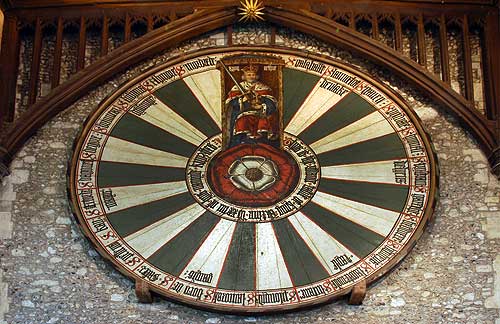
One of the main contenders as the basis for Camelot as having been important is Camulodunum named after the war God Camus, modern day Colchester, which had been the capital of the Roman province of Brittania, the main problem with that though is by tradition the battles Arthur fought were in establishing a Kingdom in Northern England so accordingly i want to consider the Camulodunum of the North.
In the early second century AD Ptolemy in his famed treatise on Geographia listed as the last of his nine poleis attributed to the Brigantes tribe of northern Britain, following the base of the Sixth Legion at Eboracum/York, a place named Camulodunum, evidently somewhere in northern England
Ptolemy then places this Camulodunum in the tribal region of the Setantii fairly close to the Portus Setantiorum, these were a sept or sub-tribe of the Brigantes, who ruled the entire north of England, this tribal settlement never appears to become Roman which has made actual identification of the place suggested difficult, but it is mentioned again in a more localized context;
...the 7th century Ravenna Cosmology, where appears a place named Camulodono (R&C#111), listed between the entries for Alunna (Watercrook, Lancashire) and Calunio (Lancaster, Lancashire)
.
In suggesting that Camuloduno lay between the Roman Forts at Lancaster and Watercrook the only possibility is connection with the Roman Fort at Galacum and the nearby Roman settlement of modern day Casterton, the stone Fort which could hold a 1,000 man garrison and remained in use throughout the Roman occupation was in association with the Setantii settlement of Camuloduno and one finds traces of iron occupation such as at Leck Fell adjacent to Casterton Fell;

And even on Casterton Fell itself there is the stone circle, the area above the Lune valley an important site of the Setantii inhabitants.
Historical linguists suggest the nt element in Setantii confirms the tribe were indeed Brythonic Celts descended from the Iberian “beaker folk”. Certainly, the tribe appears to have been linked to Sétanta, the birth name of the British/Irish hero Cúchulain and meaning “he who knows the way”
The southernmost boundary of the Setantii tribal lands was Seteia, the Mersey River . Their territory is thought to have reached as far north as Borrow Beck, just south of Tebay, in southern Cumbria. A form of their Celtic tongue survived in this area until the twelfth century
The question then is what importance would the settlement at Camulodunum have had in the struggles of Post-Roman Britain, or more likely the nearby Roman Fort of Galacum, and the first thing that should be noted is that nobody had any interest in a united Britain, that was impossible, and the breakdown appears to have been according to the old tribal confederations, thus the concern here was in re-establishing the tribal region of the Brigantes;
The name 'Rheged' seems to derive from the confederation of Celtic tribes that occupied almost the whole of the north below Hadrian's Wall, the Brigantes. Formed at a time when the Celtic language was undergoing rapid change, 'Brigant' seems to have become 'Breged' and then Rheged
Rheged was a comparatively large kingdom that covered the whole of modern north-west England, roughly incorporating the counties of Cumbria and Lancashire, and possibly Cheshire.
Initially the Kingdom of Rheged then covered most of Northern England, but then was split with only the Western half retaining the name, Camulodunum was central within this Kingdom, with Carlisle as it's Northern capital under Carvetii control and Ribchester in the South under the Setantii
According to the sources, the kingdom of Rheged was divided upon the death of Meirchion Gul around 535. The Rhegedian capital of Caer Ligualid (Carlisle) was retained for North Rheged, while Caer Robais (Ribchester) probably served as South Rheged's capital.
In none of this had there been an actual King Arthur, that tradition relates to the Sarmatian Knights and the veteran settlement at Ribchester which had been granted the right to settle in that region as was outline in From Scythia to Camelot, they would have been important in establishing the Northern Kingdom and first mention of them is from Gwynedd into which the last claiments of Rheged had integrated.
The tradition that most concerned itself with the importance of Camelot was that aspect concerned with Gawain;
There are also links to Welsh epic and Arthurian legend. In the Welsh epic of Culhwch and Olwen, Seithennin, the bard, is grandfather to Gwenwynwyn, generally identified as Gawain, Arthur’s First Fighter...even that Gawain is identical in origin with CuChulain as the tales about him may be indigenous to the north of England; in ancient times, the north-west of England contained a tribe called the Setantii, while the original name of CuChulain was Setanta. It may well have been that CuChulain was a Setantii hero with a reputation on both sides of the Irish sea, whose memory was kept alive under the name of Gawain by the medieval descendants of the Setantii in England
Sept of the Brigantes
Camuloduno then as Camelot was only of particular concern to the Setantii for whom it had been their heartland, interestingly the earliest epic of Gawain is the Flemish Roman van Walewein as it was the Flemish as allies of the Normans that had been given lands in and around Lancaster and the Lune valley, so they would have been familiar with the local traditions of those parts regarding the earlier Camuloduno.
Gawain and the Chessboard
In some sense the Flemish and Breton and later French aristocracy must have related to the earlier traditions of struggle against the ancestors of the Anglo-Saxons and Picts, and perhaps even seen themselves as liberators and revivalists of the Celtic mythos, in conjunction with religious esoterica.
According to the Harlian MS 3958, Beli was founder of the Gwynedd line and husband to Anna, "mother [of the Gwynedd line of kings], who they say was a cousin of the Virgin Mary, mother of our lord Jesus Christ." The reasoning is that, perhaps influenced by the Irish confusion between Danu/Danann and Anu, there was also this confusion between Don and Anna.

a reply to: Kantzveldt
Definitely Tintagel in Cornwall
Beautiful place, beautiful scenery ............ i would lay my round table there, if i had one
Cheers
Definitely Tintagel in Cornwall
Beautiful place, beautiful scenery ............ i would lay my round table there, if i had one
Cheers
a reply to: Kantzveldt
Quite the facts.. .was studying this-just this week in fact...thank you. I have some questions later for you.
Again. ..thanks.
MS
Quite the facts.. .was studying this-just this week in fact...thank you. I have some questions later for you.
Again. ..thanks.
MS
Sorry I couldn't resist.
Great article and well put together!
a reply to: corblimeyguvnor
Definitely not there as the battles traditionally related involved the establishment of a Northern Kingdom not Cornwall, which has never had any problem with the Picts...the consideration then is from which Kingdom established in the Post-Roman era do the tales derive and later attempts by Medieval monks to profit from the legends of other tribes needn't be taken into account, no matter how dramatic the scenery
Definitely not there as the battles traditionally related involved the establishment of a Northern Kingdom not Cornwall, which has never had any problem with the Picts...the consideration then is from which Kingdom established in the Post-Roman era do the tales derive and later attempts by Medieval monks to profit from the legends of other tribes needn't be taken into account, no matter how dramatic the scenery
edit on Kam13114vAmerica/ChicagoThursday1531 by Kantzveldt because: (no reason given)
This is an interesting post. I have always been of the opinion that Camelot was based here; in the north of England, and specifically in Cumbria.
rArthur's last battle was at Camlann, also known as Camboglanna. This is thought to be the old Roman name for Birdoswald, although some people think
the name actually refers to Castlesteads.
It also throws up the intriguing possibility that Avalon actually refers to the Isle of Man which has a very deep mystical tradition. There is also the recent excavation eply to: Kantzveldt
It also throws up the intriguing possibility that Avalon actually refers to the Isle of Man which has a very deep mystical tradition. There is also the recent excavation eply to: Kantzveldt
As usual, an interesting and well researched thread!
If I'm not mistaken, the earliest mention of Arthur is from Y Gododdin which is thought to have been written in the 6th century AD:
The use there would seem to indicate that the audience would be quite familiar with Arthur and his life and deeds. The first known mention of Camelot isn't until nearly 600 years later in Chrétien de Troyes' Lancelot, le Chevalier de la Charrette.
My opinion is that Arthur is probably based on an actual historical figure but Camelot is most likely a later literary invention.
If I'm not mistaken, the earliest mention of Arthur is from Y Gododdin which is thought to have been written in the 6th century AD:
He fed black ravens on the rampart of a fortress
Though he was no Arthur
Among the powerful ones in battle
In the front rank, Gwawrddur was a palisade
The use there would seem to indicate that the audience would be quite familiar with Arthur and his life and deeds. The first known mention of Camelot isn't until nearly 600 years later in Chrétien de Troyes' Lancelot, le Chevalier de la Charrette.
My opinion is that Arthur is probably based on an actual historical figure but Camelot is most likely a later literary invention.
edit on
2015-1-15 by theantediluvian because: (no reason given)
a reply to: Heighingtonkate
In suggesting Camulundo as the heartland of the Northern Kingdom it can be noted that it is at the inter-section point of three counties, Lancashire, Yorkshire and Cumbria which would have made up the greater part of the Kingdom based upon the earlier Brigantes tribal confederation.
The Setantii were certainly a sea faring people with interests in Ulster as well as Lancashire and possibly at some point the North Western Isles so the notion of sailing off toward some Westward isle not so surprising.
a reply to: theantediluvian
Yes i tend to subscribe to the Scythia to Camelot theory which holds that Arthur/Artorius was the Roman General that had settled the Sarmatian cavalry in Britain and that they subsequently became known as 'Arthur's men', even though he was long dead.
They were settled around Ribchester the suggested capital of Southern Rheged and after that ceased to exist their court contracted into Gwynedd and Powys, the Kings of Gwynedd also claiming to be Kings of Southern Rheged for some time, so it is not so surprising that from that court the earliest mentions should occur.
At least four of 'Arthurs' battles are thought to have taken place around the borders of Southern Rheged at the River Douglas near Wigan.
In suggesting Camulundo as the heartland of the Northern Kingdom it can be noted that it is at the inter-section point of three counties, Lancashire, Yorkshire and Cumbria which would have made up the greater part of the Kingdom based upon the earlier Brigantes tribal confederation.
The Setantii were certainly a sea faring people with interests in Ulster as well as Lancashire and possibly at some point the North Western Isles so the notion of sailing off toward some Westward isle not so surprising.
a reply to: theantediluvian
Yes i tend to subscribe to the Scythia to Camelot theory which holds that Arthur/Artorius was the Roman General that had settled the Sarmatian cavalry in Britain and that they subsequently became known as 'Arthur's men', even though he was long dead.
They were settled around Ribchester the suggested capital of Southern Rheged and after that ceased to exist their court contracted into Gwynedd and Powys, the Kings of Gwynedd also claiming to be Kings of Southern Rheged for some time, so it is not so surprising that from that court the earliest mentions should occur.
At least four of 'Arthurs' battles are thought to have taken place around the borders of Southern Rheged at the River Douglas near Wigan.
edit on Kpm13114vAmerica/ChicagoThursday1531 by Kantzveldt because: (no reason given)
Great thread mate.
Brigantes- brigantia- bridghid?
Most goddesses/spirits, especially those of the wells, were later related to bridghid and brought all the celts and other tribes under one goddess system as opposed to their own separate but similar practices. The tri-cast given to bridghid encompassed all of the mother goddesses aspects of the tribes into one, but also divided her into three. Kind of like a ancient new world order, using a succubus? Lol.
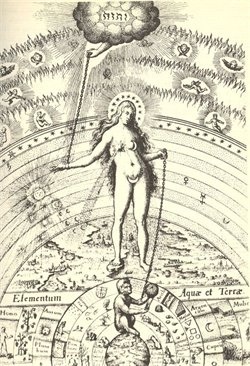
Interestingly, shaman would do this by entering a yoni or cleft/opening in a rock through trance, into other worlds.
I think its possible back then, when the population was more tribal, and had a belief in magic and otherworlds and possibly interactions, the "kings"/shaman, or chiefs of the tribes had spirit/goddess wives, like shaman do today. This spirit was believed by the tribes people to be the Earth spirit or the ancestor spirit of the original creation of the tribe, making all the stories relatable to all members of the tribe.
There is evidence that this could all tie in with the celestial nymphs, and perhaps how they helped shape a earlier civilisation through a system of sacral or sacred kingship.
en.m.wikipedia.org...

Joining all these "spirit wives" into the one succubus enabled the a subtle manipulation to take place, and perhaps even a great evil....
Legend has it that the queen of the maiden goddesses who facilitated movement between realms or worlds was intruded upon by a evil king who stole her magical pearl of pure light. This story parallels many myths.
After this a great deal of trust was lost and the maidens retreated, simultaneously these other worlds or "kingdoms" faded out of perception and were now only accessible to a few, perhaps even still today.
Camelot could have been a "realm" of thought and belief that was superimposed over the land, integrating a magical mindset that made life a heroic adventure full of magic, mystery and wonder for all. Kind of national mystery school that began to arise, until eventually the spiritual foundation faded into the subconscious. The ancient Greeks did the same sort of thing if I'm not mistaken...

...and so I stand deep within this cavern gazing out across a lagoon that reflects no stars. Inferno smoulders beneath the waters, and soon it will burst into flames. When it does, nothing on earth will be able to stop it.
The grail legends are a smouldering ember of a secret heritage of sovereignty, and a forbidden inner journey. Laid to rest as a myth in the minds of some people, while manifesting as truth in the experiences of others...
 .
.

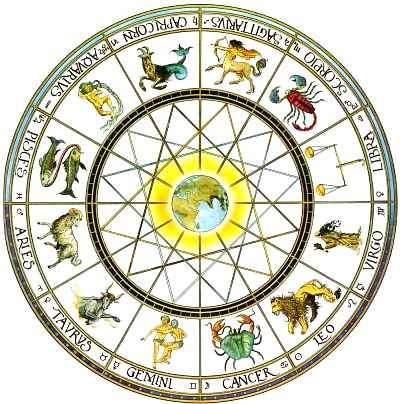
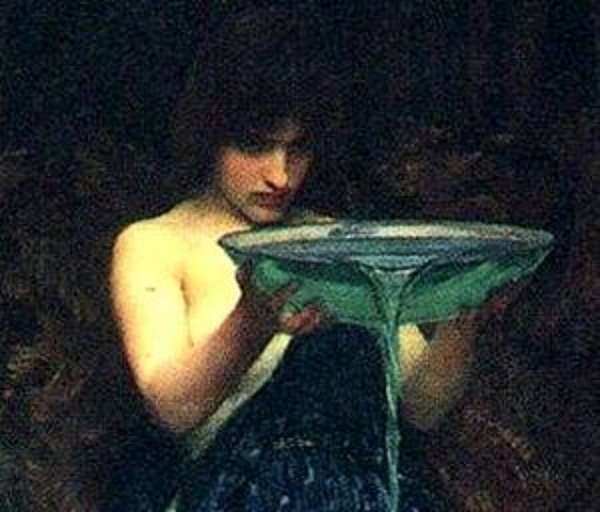

The Welsh romance Peredur had no Grail per se, presenting the hero instead with a platter containing his kinsman's bloody, severed head.


The question then is what importance would the settlement at Camulodunum have had in the struggles of Post-Roman Britain, or more likely the nearby Roman Fort of Galacum, and the first thing that should be noted is that nobody had any interest in a united Britain, that was impossible, and the breakdown appears to have been according to the old tribal confederations, thus the concern here was in re-establishing the tribal region of the Brigantes;
Brigantes- brigantia- bridghid?
Brigantia was a goddess in Celtic (Gallo-Roman and Romano-British) religion of Late Antiquity.
Through interpretatio Romana, she was equated with Victoria. The tales connected to the characters of Brigid and Saint Brigid in Irish mythology and legend have been argued to be connected to Brigantia although the figures themselves remain distinct.
Most goddesses/spirits, especially those of the wells, were later related to bridghid and brought all the celts and other tribes under one goddess system as opposed to their own separate but similar practices. The tri-cast given to bridghid encompassed all of the mother goddesses aspects of the tribes into one, but also divided her into three. Kind of like a ancient new world order, using a succubus? Lol.

A succubus may take a form of a beautiful young girl but closer inspection may reveal deformities upon their bodies, such as bird-like claws or serpentine tails. Folklore also describes the act of sexually penetrating a succubus as akin to entering a cavern
Interestingly, shaman would do this by entering a yoni or cleft/opening in a rock through trance, into other worlds.
I think its possible back then, when the population was more tribal, and had a belief in magic and otherworlds and possibly interactions, the "kings"/shaman, or chiefs of the tribes had spirit/goddess wives, like shaman do today. This spirit was believed by the tribes people to be the Earth spirit or the ancestor spirit of the original creation of the tribe, making all the stories relatable to all members of the tribe.
The spirit spouse is one of the most widespread elements of shamanism, distributed through all continents and at all cultural levels. Often, these spirit husbands/wives are seen as the primary helping spirits of the shaman, who assist them in their work, and help them gain power in the world of spirit.
In some cultures, gaining a spirit spouse is a necessary and expected part of initiation into becoming a shaman. Evidence of spirit spouses may be seen in non-shamanic cultures as well."
Robin Artisson includes a variation of the Norse fetch concept in his book The Witching Way of the Hollow Hill. He supports this with the thesis that the questing/rescuing heroes in myths, legends, and fairy tales can be seen as the soul, and rescued maidens as the fetch bride. However, he does not make it clear if this occurs in dreams, shamanic journeys in a trance state, or both.
There is evidence that this could all tie in with the celestial nymphs, and perhaps how they helped shape a earlier civilisation through a system of sacral or sacred kingship.
en.m.wikipedia.org...

At Corbridge on Hadrians Wall - in antiquity, Coria - Brigantia has the divine epithet Caelestis ("Heavenly, Celestial") and is paired with Jupiter Dolichenus (AE 1947, 00122; RIB 01131):
There is an inscription at Irthington, Yorkshire DEAE NYMPHAE BRIGANTIAE—"divine nymph Brigantia" (Nicholson).
Joining all these "spirit wives" into the one succubus enabled the a subtle manipulation to take place, and perhaps even a great evil....
Legend has it that the queen of the maiden goddesses who facilitated movement between realms or worlds was intruded upon by a evil king who stole her magical pearl of pure light. This story parallels many myths.
After this a great deal of trust was lost and the maidens retreated, simultaneously these other worlds or "kingdoms" faded out of perception and were now only accessible to a few, perhaps even still today.
Camelot could have been a "realm" of thought and belief that was superimposed over the land, integrating a magical mindset that made life a heroic adventure full of magic, mystery and wonder for all. Kind of national mystery school that began to arise, until eventually the spiritual foundation faded into the subconscious. The ancient Greeks did the same sort of thing if I'm not mistaken...

...and so I stand deep within this cavern gazing out across a lagoon that reflects no stars. Inferno smoulders beneath the waters, and soon it will burst into flames. When it does, nothing on earth will be able to stop it.
The grail legends are a smouldering ember of a secret heritage of sovereignty, and a forbidden inner journey. Laid to rest as a myth in the minds of some people, while manifesting as truth in the experiences of others...
The word graal, as it is earliest spelled, comes from Old French graal or greal, cognate with Old Provençal grazal and Old Catalan gresal, meaning "a cup or bowl of earth, wood, or metal" (or other various types of vessels in different Occitan dialects). The most commonly accepted etymology derives it from Latin gradalis or gradale via an earlier form, cratalis, a derivative of crater or cratus.

A grail, wondrous but not explicitly holy, first appears in Perceval le Gallois, an unfinished romance by Chrétien de Troyes: it is a processional salver(platter)
used to serve at a feast.


The Grail was considered a bowl or dish when first described by Chrétien de Troyes.

Hélinand of Froidmont described a grail as a "wide and deep saucer"

The Welsh romance Peredur had no Grail per se, presenting the hero instead with a platter containing his kinsman's bloody, severed head.

" In Old French, san graal or san gréal means "Holy Grail" and sang réal means "royal blood"

edit on 15-1-2015 by Wifibrains because: (no reason given)
a reply to: Wifibrains
Brigantia is quite complex, but interestingly associated with the elevated state;
interesting because that was also what Setanta was noted for, simply going off on one and transcending normative human behaviour, and the desire to achieve such was translated through into the Grail Romances in terms of achieving the perfected state from a Christian perspective.
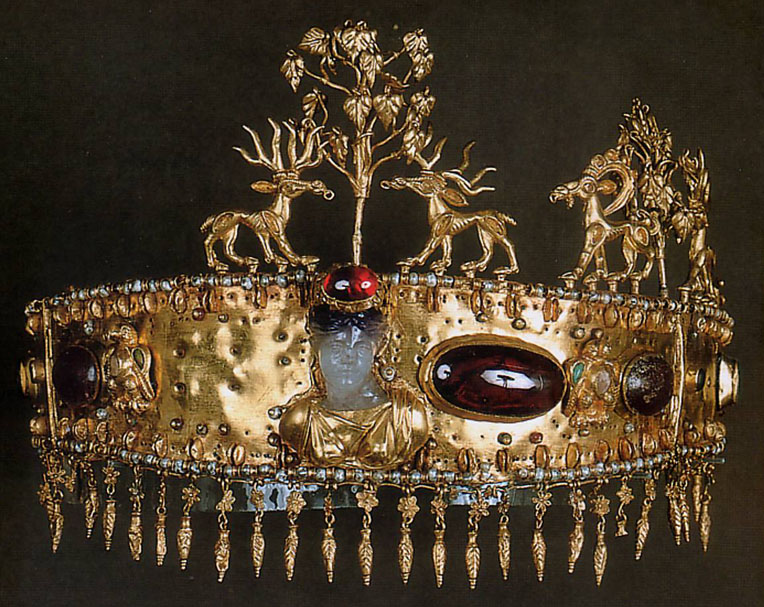
I think the Sarmatian and Alanic auxilliaries of the Late Roman period must have revitalized Celtic mystical thought because their primary Goddess was also a High Celestial one associate with purity and compared by the Greeks to Hestia, the Goddess of home and hearth like Brigid, the Celts have a habit of confusing themselves over time and the Sarmatians probably helped them return to basics, and the tradition of Heavenly Anu and Anna
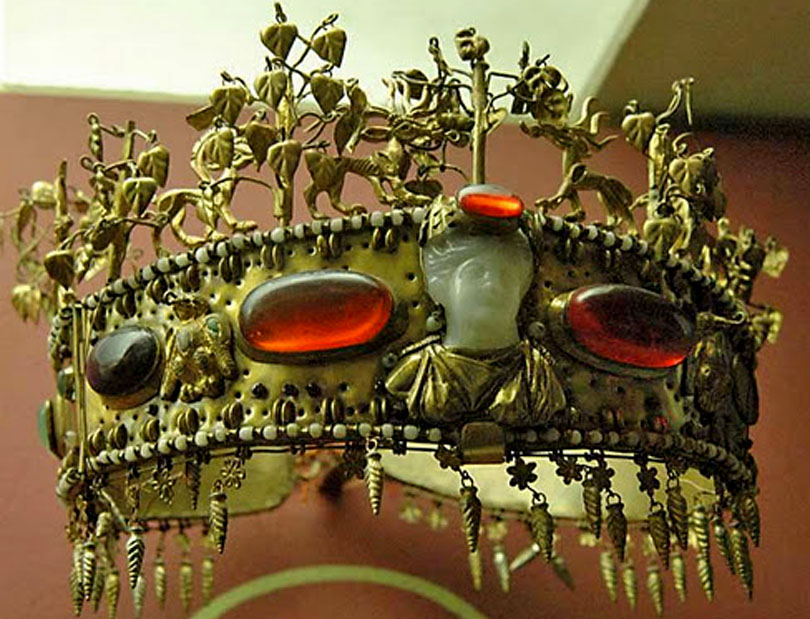
So Brigid was seen as that aspect of the Celestial Anna that was personable toward humanity and could be understood as amongst them as their tutelary Goddess, when translated into Christian terms, Brigid, when "reformed" into St. Brigit, was then made the wet-nurse of Jesus and a cousin of Mary.
Treasure of the Dragon Kings
Brigantia is quite complex, but interestingly associated with the elevated state;
Brigantia seems to have been the Celtic equivalent of the Roman Minerva and the Greek Athena , goddesses with very similar functions and apparently embodying the same concept of elevated state, whether physical or psychological.
She is the goddess of all things perceived to be of relatively high dimensions such as high-rising flames, highlands, hill-forts and upland areas; and of activities and states conceived as psychologically lofty and elevated, such as wisdom, excellence, perfection, high intelligence, poetic eloquence, craftsmanship (especially blacksmithing), healing ability, druidic knowledge and skill in warfare. In the living traditions, whether seen as goddess or saint, she is largely associated with the home and hearth
interesting because that was also what Setanta was noted for, simply going off on one and transcending normative human behaviour, and the desire to achieve such was translated through into the Grail Romances in terms of achieving the perfected state from a Christian perspective.

I think the Sarmatian and Alanic auxilliaries of the Late Roman period must have revitalized Celtic mystical thought because their primary Goddess was also a High Celestial one associate with purity and compared by the Greeks to Hestia, the Goddess of home and hearth like Brigid, the Celts have a habit of confusing themselves over time and the Sarmatians probably helped them return to basics, and the tradition of Heavenly Anu and Anna

So Brigid was seen as that aspect of the Celestial Anna that was personable toward humanity and could be understood as amongst them as their tutelary Goddess, when translated into Christian terms, Brigid, when "reformed" into St. Brigit, was then made the wet-nurse of Jesus and a cousin of Mary.
Treasure of the Dragon Kings
Great thread!
I read a book years ago that followed the idea that Owain Ddantgwyn, a king of Powys, was the basis of Arthur.
en.wikipedia.org...
There are two things that really grab me about the theories.
1 Just the chance that there was an Arthur and,
2 That he is idolised by the descendants of his former enemies as their own (We are mostly Anglo Saxon in England now, with a few variations.
I read a book years ago that followed the idea that Owain Ddantgwyn, a king of Powys, was the basis of Arthur.
en.wikipedia.org...
There are two things that really grab me about the theories.
1 Just the chance that there was an Arthur and,
2 That he is idolised by the descendants of his former enemies as their own (We are mostly Anglo Saxon in England now, with a few variations.
a reply to: SprocketUK
It's true that the Angles of Bernicia weren't the least interested in any Arthurian tradition as they were the one's who gradually took over the Northern Kingdom, so their writers such as Bede wouldn't be making mention of it, and the same for the Saxons.
Even the Bards of Gwynedd didn't show that much interest in their failed Northern cousins, which is why i raised the question of why the Flemish, Celtic and Alanic Nobility of France that came over with the Norman conquest should have chosen to make such a big deal of things.
Of course the Angles and Saxons were their enemies also to some degree, and they had also adopted the Alanic form of mounted warfare and the cult of the Knight, so any tradition of an earlier noble defence of a British Kingdom involving such knights would have appealed, and the whole tale has the moral dimension of united the Kingdom shall stand and divided it shall fall, but even so it must have been the mystical aspects from the region that most captivated the imagination.
It's true that the Angles of Bernicia weren't the least interested in any Arthurian tradition as they were the one's who gradually took over the Northern Kingdom, so their writers such as Bede wouldn't be making mention of it, and the same for the Saxons.
Even the Bards of Gwynedd didn't show that much interest in their failed Northern cousins, which is why i raised the question of why the Flemish, Celtic and Alanic Nobility of France that came over with the Norman conquest should have chosen to make such a big deal of things.
Of course the Angles and Saxons were their enemies also to some degree, and they had also adopted the Alanic form of mounted warfare and the cult of the Knight, so any tradition of an earlier noble defence of a British Kingdom involving such knights would have appealed, and the whole tale has the moral dimension of united the Kingdom shall stand and divided it shall fall, but even so it must have been the mystical aspects from the region that most captivated the imagination.
I'm from York and i had never considered Camelot to be based in the north, in my mind it always been connected to glastonbury, not sure why, i could
have read some misleading books in my youth!
a reply to: Kantzveldt
nice.
There could also be links with Virgo (♍) note the little fish symbol in the glyph and her virginal celestial maiden-ship...
nice.
There could also be links with Virgo (♍) note the little fish symbol in the glyph and her virginal celestial maiden-ship...
edit on 16-1-2015 by Wifibrains because: (no reason given)
I heard it was in Scotland.
www.magicdragon.com...
www.kingarthurlegend.com...
www.magicdragon.com...
www.kingarthurlegend.com...
There are two possibilities: Camelot was simply a non-existent figment of the writer's imagination or the notion of Camelot is based on a real fortress.
If it was a figment of the imagination, then that is the end of it, full stop. However, if we consider the possibility that the idea of Camelot is based on a real fortress, then there is only one serious contender - the old Roman fortress, "Ad Vallum", which lay on the outskirts of Falkirk in Scotland, just some twelve miles or so from the battlefield, where, according to the 7th century AD monk Adomnan, Arthur (Arturius) was killed while fighting the Picts.
a reply to: DrunkYogi
But from the article you quoted from;
If it's a question of locating a Northern Camulodonum then that is covered in the OP, it was at Casterton in Northern Lancashire a settlement of the Setantii tribe.
a reply to: Wifibrains
The relationship between the Virgin Mary and Saint Anne was pretty much Leonardo's favourite subject, he had them variously sitting on each others laps, so yes Anna as an overall Celestial Goddess and Mary in particular as Virgo.
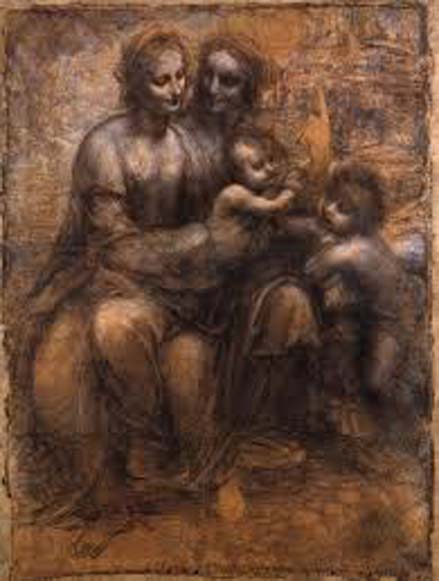
"It is written on a wall in Rome that Ribchester was as rich as any town in Christendom." This is an ancient saying whose origins have been lost in time but may refer to a rough translation of the Latin inscribed on some artefact long since discovered and lost again.
But from the article you quoted from;
The name Camelot is believed to be derived from the word "Camulodonum", which was the Roman name for Colchester, which lies several hundred miles away in the south of England.
However, early historians of Scotland, without the knowledge that we have today, mistakenly believed that the ruins of the Roman fortress "Ad Vallum" were in fact the ruins of Camulodonum, and because of the closeness of France and Scotland, and the influence the two countries exerted on one another, you may be certain that if the Scots believed this fortress was Camulodonum, then the French did too.
If it's a question of locating a Northern Camulodonum then that is covered in the OP, it was at Casterton in Northern Lancashire a settlement of the Setantii tribe.
a reply to: Wifibrains
The relationship between the Virgin Mary and Saint Anne was pretty much Leonardo's favourite subject, he had them variously sitting on each others laps, so yes Anna as an overall Celestial Goddess and Mary in particular as Virgo.

"It is written on a wall in Rome that Ribchester was as rich as any town in Christendom." This is an ancient saying whose origins have been lost in time but may refer to a rough translation of the Latin inscribed on some artefact long since discovered and lost again.
edit on
Kam13115vAmerica/ChicagoFriday1631 by Kantzveldt because: (no reason given)
new topics
-
The Great Reckoning
Rant: 5 hours ago -
The Inconvenient Bellwether County Dilemma
Education and Media: 5 hours ago -
Elite Universities Are Coddling Students Grieving Over Trump's Victory
Mainstream News: 5 hours ago -
Witnesses who will testify in next week's hearing on UAPs
Aliens and UFOs: 5 hours ago -
Qatar kicks out HAMAS
Middle East Issues: 6 hours ago -
leftwing wymen shaving their head in protest
US Political Madness: 8 hours ago -
Racist Text Messages Mass Distributed
Social Issues and Civil Unrest: 8 hours ago -
No, the election results aren't reminiscent of 1930s Germany. But this is.
US Political Madness: 9 hours ago -
Agree or Disagree
2024 Elections: 11 hours ago
top topics
-
The Inconvenient Bellwether County Dilemma
Education and Media: 5 hours ago, 27 flags -
The Great Reckoning
Rant: 5 hours ago, 16 flags -
Leaving the US due to severe TDS?
US Political Madness: 12 hours ago, 14 flags -
No, the election results aren't reminiscent of 1930s Germany. But this is.
US Political Madness: 9 hours ago, 14 flags -
Qatar kicks out HAMAS
Middle East Issues: 6 hours ago, 12 flags -
leftwing wymen shaving their head in protest
US Political Madness: 8 hours ago, 11 flags -
Elite Universities Are Coddling Students Grieving Over Trump's Victory
Mainstream News: 5 hours ago, 11 flags -
Agree or Disagree
2024 Elections: 11 hours ago, 7 flags -
Witnesses who will testify in next week's hearing on UAPs
Aliens and UFOs: 5 hours ago, 6 flags -
Racist Text Messages Mass Distributed
Social Issues and Civil Unrest: 8 hours ago, 4 flags
active topics
-
82 yr Woman Arrested for Hate Crime after Assaulting Trump Supporters
2024 Elections • 28 • : CriticalStinker -
leftwing wymen shaving their head in protest
US Political Madness • 72 • : RazorV66 -
Where ARE the 20 million votes??? Where ARE they????? WHERE???
US Political Madness • 53 • : navigator70 -
President-Elect DONALD TRUMP's 2nd-Term Administration Takes Shape.
Political Ideology • 59 • : cherokeetroy -
Racist Text Messages Mass Distributed
Social Issues and Civil Unrest • 19 • : MetalThunder -
Agree or Disagree
2024 Elections • 18 • : BingoMcGoof -
DOJ moving to wind down Trump criminal cases before he takes office
Mainstream News • 40 • : UKTruth -
The Great Reckoning
Rant • 15 • : Flyingclaydisk -
The Inconvenient Bellwether County Dilemma
Education and Media • 6 • : putnam6 -
Liberal women going on sex strike over Trump win
US Political Madness • 62 • : matafuchs
16

